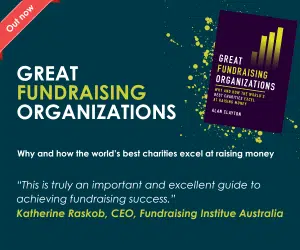Finding committed donors from disaster responders
A devastating earthquake hits Nepal. Many people are killed, and tens of thousands are without shelter, clean water and food. International organisations from nation states, UN and NGOs respond fast.
People all over the world see the disaster on TV, are stirred emotionally and want to help. They want to do something to help. So they do what they can – and make a donation.
These are beautiful human beings that want to help others. They want to help strangers, often on the other side of the world in place they have never been and will never go. But they care.
Some of these people are not ‘traditional’ donors. They have not responded to other media. Jeff Brooks, author of the best fundraising blog Future Fundraising Now wrote in his recent blog post ‘Fundraising for the Nepal Quake and other disasters‘:
“New donors you get through disaster fundraising will have terrible retention rates — tens of percentage points less than you’re used to. That’s because you get a lot of younger and less-committed donors who have no intention of ever giving again. There’s not much you can do about it other than avoid throwing good money after bad.”
I agree with his first bit, but not his last. You can do something about it. Our latest study of Australian donors shows that the average regular giver (sustainer in American) is much younger than your traditional cash donor.
Mean ages are around 43 and 72 respectively. So, if emergency donors are younger they could be good regular giving prospects.

Cash & regular giving donors by age – Pareto Fundraising
Indeed, they are. Many charities spend lots of money generating ‘leads’ for calling people to get regular gifts. They are pleased if they get 6% conversion on the phone. This usually means the donor acquisition costs are cheaper than their normal largest source of new donors, face to face.
But with emergency donor conversion in excess of 7% after a couple of weeks, and the leads effectively ‘free’ we should be getting even better returns.
Charities who are already working on regular giver (sustainer) calling programmes will find specialist agencies can quickly switch calls to emergency donors for a better return. If this could be done within days I imagine 10% response of those we speak to should be achievable.
But we can do even more – calling and emailing people and asking them for a second donation makes a lot of sense too. And it is worth testing a second gift ask, then a regular gift ask vs straight to regular giving.
Advertisement
Donor journey
In lieu of established testing, I propose this donor journey for new donors.
1. Charity appeals for funds in media: press ads, social media, digital advertising, TV ads, TV presenters appeal directly, phone, direct mail, email, radio, through churches, temples and through corporate supporters.
2. Donations come in through these channels:
a. Online
b. Post
c. Phone
d. Fax (yes, there are still some!)
e. Collection points (eg banks)
3. Thank quickly – email, explaining that the donors money is having an impact straight away. DEBIT FAST. It doesn’t make sense to have an emergency appeal then not debit as quick as possible.
4. Follow up all donations that meet a certain criteria with a second cash gift ask within hours – whilst the media frenzy is still happening.
5. Follow up AGAIN as media dies down, or within ten days – whichever is sooner, and ask for a regular gift (sustainer).
6. Thanking and updating throughout by email.
7. Use retargeting and social media to ‘follow’ these donors with ads and posts relevant to the emergency. And post emergency, keep them in mind for acquisition campaigns.
When the Nepal earthquake hit I was working on an interactive article giving more detail on this plan.
I decided to make this available as a step by step guide, which will include how to work with the data, make the most out of the targeting, how to use social information, lot of examples and more.
If you want the article, which I am prioritising right now, please let me know by clicking here and I will send you it shortly.
Sean Triner is is co-founder, mentor and vanguard of the international Pareto Group of companies – Pareto Fundraising (in Australia, NZ, HK, UK and North America) and Pareto Phone. He has dedicated his career to developing, testing and refining fundraising strategies with some of the world’s most successful and influential charities.



